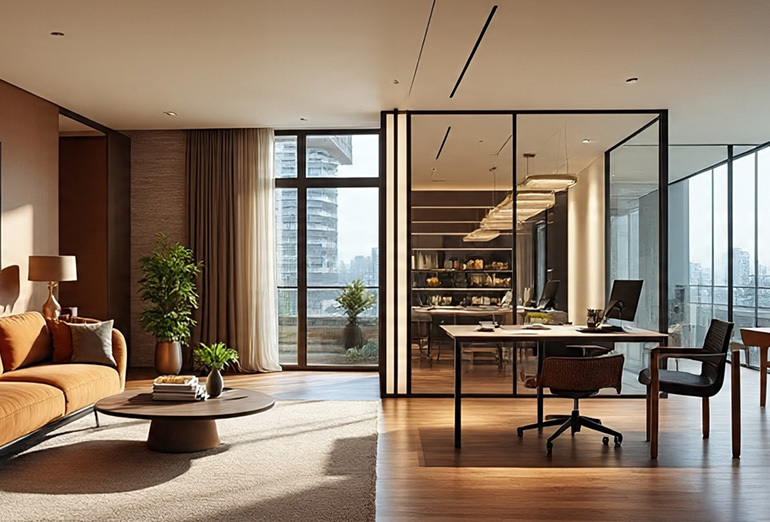-
24 Sep, 2025
- By Nickel
Top Interior Designers in India: Trends, Stats & What Sets Them Apart
The phrase top interior designers in India isn’t just a label—it reflects a growing aspiration for excellence in homes, offices, and commercial spaces. In 2024, the Indian interior design market was valued at around USD 34 billion, and is projected to grow to USD 71 billion by 2033, with a compound annual growth rate (CAGR) of ~8.5% IMARC Group. Meanwhile, some reports suggest a more aggressive growth outlook of 14.3% CAGR through 2030, projecting the market to reach USD 81.2 billion by then P&S Intelligence.
This rapid growth is fueled by rising disposable incomes, urbanization, and an evolving design sensibility across cities. Moreover, the luxury interior design market in India alone was estimated at USD 3,381 million in 2024 and is expected to grow at ~5.82% annually until 2032 Credence Research Inc..
What Makes a Designer “Top”?
Instead of just focusing on portfolio or fame, here are traits that distinguish top interior designers in India:
- Strong Vision + Technical Skill: They balance creativity with structural & engineering awareness—lighting, acoustics, layout, MEP integration.
- Client Empathy & Collaboration: They listen, adjust, and co-create rather than impose. Good top designers make the client feel heard.
- Quality Network & Execution Muscle: Having trusted contractors, vendors, and reliable execution helps them maintain consistency across projects.
- Signature Yet Flexible Style: They often have a design signature, but can adapt to context, client preferences, and local aesthetics.
- Use of Technology & Innovation: Many top designers use 3D visualization, VR walkthroughs, and smart home integrations to stay ahead.
In India, many design studios get recognized in lists like AD100 India—which annually features the country’s finest architects and interior designers Architectural Digest India. Also, Indian design publications and studios like those listed in Meet the Top 10 Indian Interior Design Studios of 2024 reflect how the top echelon is evolving indiadesignid.com.
Examples of Top Studios & Their Reach
While many names deserve mention, here are a few that often appear in lists and features:
- Studio Lotus and Morphogenesis are frequently praised for projects that blend local craft with global sensibilities.
- Boutique names and emerging designers also find their place via awards and media mentions in the AD100 list Architectural Digest India+1.
- Firms listed in “Top 15 Interior Design Companies in India 2025” are diversifying across residential, commercial, and luxury spaces Novatr.
These studios succeed not just by having standout designs, but by managing scale, quality, client trust, and consistency across projects.
How Nickel XD Fits In
Among the rising leaders, Nickel XD Interior Design Studio stands out for its approach to powerful, infinitely customisable, and mysterious designs across retail, commercial, and office spaces. While many top designers focus on prestige, Nickel XD emphasizes flexibility, storytelling, and functional elegance—making it a distinctive voice among India’s design community.
Trends Helping Shape the Top Tier
- Commercial Interiors Dominance: Commercial and retail sectors currently make up about 75% of the interior design market in India, becoming the major revenue contributors Credence Research Inc.+3IBEF+3Mordor Intelligence+3.
- Luxury Demand Rising: The luxury interior design segment is growing steadily, driven by high-net-worth individuals wanting bespoke elegance Credence Research Inc..
- Sustainability & Local Craft: Designers are increasingly emphasizing eco-friendly materials, modularity, and regional craft.
- Smart & Experiential Spaces: Retail, hospitality, and corporate interiors are going experiential—immersive lighting, interactive elements, hybrid spaces.
Final Thoughts
In short, “top interior designers in India” is a dynamic category—less about fame and more about consistent excellence, adaptability, and client resonance. These designers lead not only through visual brilliance but through process, trust, and innovation.
So as you explore, ask: does this designer understand both ambition and context—and can they bring that vision alive?


